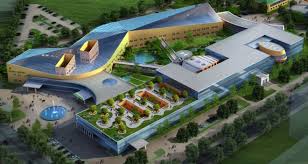PORT OF SPAIN, Trinidad — Following discussions with seismic experts and structural engineers, it has been decided that the $1.5 billion Children’s Hospital in Trinidad will be constructed at its present location, earmarked at Preysal, Couva.
“The hospital will be going forward. It is just a matter of looking at where you need to put anything extra into the design and so on,” stated Health Minister Dr Fuad Khan.
Khan, along with Housing Minister Dr Roodal Moonilal were responding during a media meeting to reports that the site was a potential earthquake hazard. According to reports by local newspapers, the location is close to the Central Range earthquake fault line.
UWI Seismic Research Centre Seismologist Dr Joan Latchman and her team, as well as National Building Code Committee chairman Shyankaran Lalla and Structural Engineers, were all present at the meeting. Also on hand for the meeting were Urban Development Corporation of T&T (Udecott) chairman Jearlean John and Shanghai Construction officials, who are constructing the Hospital.
According to Khan, discussions had been centered on design specifications of the hospital and the probability of an earthquake occurring and not solely focused on the hospital’s present location. There had been no recommendation for the project to be halted or relocated, he stated.
“It came out in the discussions that there was no desire or no need to stop the building of the hospital. What the concerns were — the stability of the hospital in the event of a 7.0 earthquake magnitude as occurred in Haiti and different places,” Khan added.
He noted that the hospital’s designers, HKS Inc, had indicated that there were “1,700 piles (heavy beams) in the hospital itself and 700 in the retaining walls, which make it an extremely stable structure as compared to other structures.”
He noted, though, that a team would be formed, consisting officials from the ministries of health and housing, the scientific groups who attended the meeting and the architects of HKS. The intention, he stated, would be to “collaborate with sharing of knowledge and any new ideas.”There will also be constant analysis of the health structures in the country in the event of a major earthquake and disasters, he assured.
Moonilal said he was confident in the structural integrity of the design and building, as well as the geo-technical work that had been conducted. In fact, he noted that in the event of an earthquake, while other buildings in the area may be at risk, the hospital will stand strong.
“We are sure that whatever happens, the hospital will be standing and I think that is where everyone is happy. We want to bring certainty that the hospital will be standing and notwithstanding the very strong scientific information and so on, we are convinced of the work that was done,” said Moonilal.
The ministries, he added are “extremely open to the scientific information that must be factored into policy making at the political level, but also at the design and technical and engineering levels”.
No changes, he said, had been made to the design.
The engineering team apparently came away from the meeting with their concerns addressed, as Lalla indicated that the consultation had “allayed their fears with regards to the adherence to building codes for the building.”
According to Lalla, the hospital was being “built to the highest standards of the seismic codes” and in fact was not on the fault line, but rather, six kilometres away.














